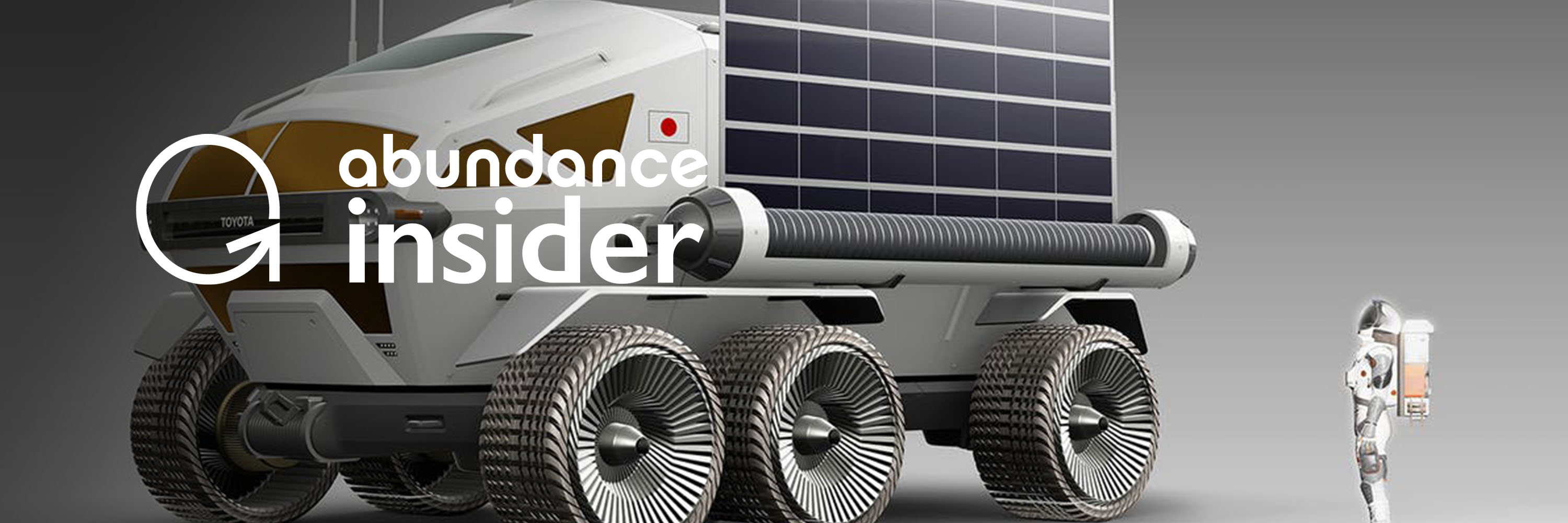
Convergence is accelerating disruption… Everywhere!
Exponential technologies are colliding into each other, reinventing products, services and industries.
Over the course of this 5-blog series, I’m going to summarize key insights from my annual CEO Summit called Abundance360 that takes place every January in Beverly Hills. We’ll look at 3D Printing, AI, Energy & Transportation, VR/AR, and Blockchain.
Today, let’s dive into 3D Printing…
To start us off, let’s get some context on the technology itself:
In summary, 3D printing (additive or augmented manufacturing) translates digital files into three-dimensional objects by layering material in a process known as additive manufacturing.
Printheads release matter in precise orientations that can produce complex structures, ranging from jewelry to three-story homes.
250 Materials: Current 3D printers can produce functional part- and full-color objects from over 250 different materials, including metals, plastics, ceramics, glass, rubber, leather, stem cells, and even chocolate.
100x Faster: More recently, groundbreaking stereolithography methods have succeeded in producing complex shapes at up to 100 times the speed of traditional 3D printers. Building from a bed of photoreactive liquid resin, the application of different light wavelengths has been found to selectively harden the resin as it’s released and thereby achieve a continuous print. Say goodbye to incremental layering!
90% Material Efficient: Beyond rapid and high-resolution production, additive manufacturing poses extraordinary second-order implications. Promising decimated economic and environmental costs, 3D printing eliminates tremendous amounts of waste, as raw material requirements are reduced by as much as 90 percent.
3D printing further unlocks opportunities for mass customization, democratized production, and systematic perfection.
Avi Reichental’s Top Predictions:
My friend Avi Reichental is my “go-to expert” in augmented manufacturing and the Founder and CEO of XponentialWorks, an advisory, venture investment and incubation ecosystem company that aims to monetize exponential tech innovation and business model disruption.
For 12 years, Reichental served as the CEO of 3D Systems, the largest publicly traded 3D printing company in the world. An early additive manufacturing pioneer, he is also part of the core faculty at Singularity University.
By 2024, Reichental predicts:
- 50 percent of all manufacturing companies will have 3D printing operations in production;
- 40 percent of all surgeons will practice with 3D models;
- 50 percent of all consumer businesses will have revenue-bearing 3D printing operations.
But it doesn’t stop there. Already, major international breakthroughs in additive manufacturing are accelerating these trends and birthing new convergent applications.
The Next 5 Printing Breakthroughs (2019-2024)
- 3D printing speeds are slated to increase by 50X - 100X.
3D printing rates have typically been limited by (1) how much force a printhead can apply, (2) how fast a printer can heat the material to induce flow, and (3) how quickly the printhead itself can move. In a new feat, however, the MIT Laboratory for Manufacturing and Productivity recently created a printer 10 times faster than traditional desktop models and three times faster than a $100,000 industrial-scale system. Achieving record speeds, the MIT team printed a helical bevel gear in a mere 10 minutes, and a pair of eyeglass frames in only 3.6. The acceleration of 3D printing will revolutionize nearly every industry, from retail to manufacturing.
- Sustainable, affordable, 3D-printed neighborhoods are launching.
The construction and real estate industries will experience disruption at monumental scales, as 3D-printed homes offer cheaper, environmentally-friendly alternatives to traditional housing. 3D-printed homes appeared for the first time last year in the Dutch city of Eindhoven, where a shortage of bricklayers increased the demand for this technology. The futuristic buildings waste less cement, cutting costs and resources. In the future, home printers will incorporate infrastructure including drainage pipes and even potentially smart sensors, rendering a fully integrated living experience. And more recently, a startup called NewStory was able to build 100 homes in 8 months for about $6,000 each.
- Convincing and delicious 3D-printed steaks and burgers in fine restaurants on Earth and in space.
3D-printed meat using plant-based proteins will provide a more sustainable solution to feeding the world’s growing population. Livestock produces 14.5 to 18 percent of global human-induced greenhouse gas emissions. Yet 3D-printed meat can provide the same satisfaction of meat consumption without the harmful environmental effects. Over the next five years, costs will lower and textures will improve. Israeli company Chef-it and Giuseppe Scionti’s NovaMeat are already making progress.
- Metal 3D printers will overtake plastics.
Prepare for the emergence of 3D-printed jewelry, car and airplane parts, kitchenware, and prototypes. 3D metal printers will not only eliminate waste in manufacturing, but also create more lightweight parts — a development especially pertinent to aircraft construction. This technology will grow increasingly available at the consumer level as well, providing more flexibility in product design than traditional plastic printers. Biodegradable cellulose may also overcome plastics in 3D printers of the future, as the MIT Laboratory for Manufacturing and Productivity has demonstrated with its 3D-printed antimicrobial surgical forceps. The mechanically robust, chemically versatile material is just one example of the endless possibilities of 3D-printed materials beyond plastics.
- “Hey” will be the most frequently used command in design engineering.
“Hey Cogni, design me a new pair of shoes, 8.5 Medium, with load bearing for my weight,” is a phrase Reichental anticipates using in the next five years. Smart 3D printers with natural language processing, AI-powered generative design and customization abilities will allow for seamless design engineering. “Think of the complete fashion industry that doesn’t have cutting and sizing and waste and that can create bespoke garments, shoes, belts, accessories, food,” Reichental notes. “There is not going to be a single industry that will be spared by the next wave of additive and generative design.”
Final Thoughts…
As new methods and materials continue to spring up, how will you integrate 3D printing into your own business in the coming years? What new ventures will you build around these emerging applications?
Keep these thoughts in mind as we explore AI technology in the coming weeks, another catalyzing technology that will only enhance the “Hey” demand functionality of 3D printers and many more devices.
Convergence leads us to transformative breakthroughs… and the human brain still beats computers when it comes to drawing these sorts of connections. Leverage that power, and what else becomes possible?
Join Me
(1) A360 Executive Mastermind: This is one of the key conversations I’ll be exploring at my Executive Mastermind group called Abundance 360. The program is highly selective, for 360 abundance- and exponentially minded CEOs (running $10M to $50B companies). If you’d like to be considered, apply here.
Share this with your friends, especially if they are interested in any of the areas outlined above.
(2) Abundance-Digital Online Community: I’ve also created a Digital/Online community of bold, abundance-minded entrepreneurs called Abundance-Digital. Abundance-Digital is my ‘onramp’ for exponential entrepreneurs – those who want to get involved and play at a higher level. Click here to learn more.
Topics: 3D Printing Materials Science Manufacturing Entrepreneurship Abundance 360 Real Estate a360 materials construction entrepreneur augmented manufacturing convergence catalyzer additive manufacturing convergence







